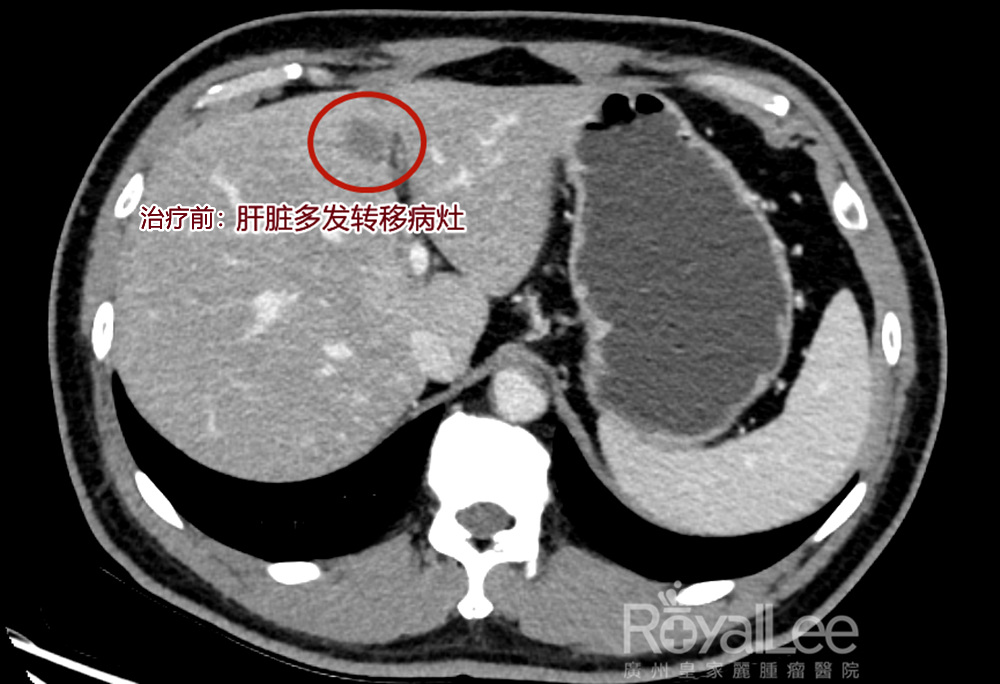Microwave ablation to address multiple liver metastases, avoiding the need for additional surgical procedures. The patient, who had colorectal cancer with multiple liver metastases in the S7/8, S4, and S2 segments, had a total of four nodules, with the largest one measuring 2.6x2.0 cm. They had previously undergone a hemicolectomy and four rounds of adjuvant chemotherapy (FOLFOX regimen). However, chemotherapy resulted in gastrointestinal reactions and liver function impairment, and the patient had already undergone one surgical procedure. Due to the rich blood supply in the liver, surgical removal of liver tumors carried a high risk of bleeding, and the family was unwilling to pursue another surgery. To address the liver metastases, the local hospital recommended further treatment in Guangzhou. Upon admission to our hospital, a multidisciplinary team (MDT) consisting of surgical oncology, hepatobiliary and pancreatic tumor specialists, minimally invasive interventionists, and the imaging center, immediately conducted a case discussion, thoroughly evaluated treatment options, and ultimately performed microwave ablation for the liver tumors. Post-ablation imaging revealed low-density changes in the tumor tissues, indicating successful ablation through vaporization and necrosis. The surgery was successful, and the patient has since recovered and been discharged.

Small needles with a diameter of less than 2 mm puncture directly into the tumor lesion.

In microwave ablation treatment, it only takes a few minutes to ablate one area.

Before treatment: multiple metastases of the liver

After the needle is inserted, the temperature inside the tumor rises rapidly, and coagulation necrosis occurs rapidly in the tumor tissue.

The tumor foci are dying by heating


Small needles with a diameter of less than 2 mm puncture directly into the tumor lesion.

In microwave ablation treatment, it only takes a few minutes to ablate one area.

Before treatment: multiple metastases of the liver

After the needle is inserted, the temperature inside the tumor rises rapidly, and coagulation necrosis occurs rapidly in the tumor tissue.

The tumor foci are dying by heating



 (+86)18613012387
(+86)18613012387 info@royallee.cn
info@royallee.cn EN
EN CN
CN TH
TH IDN
IDN  AR
AR


